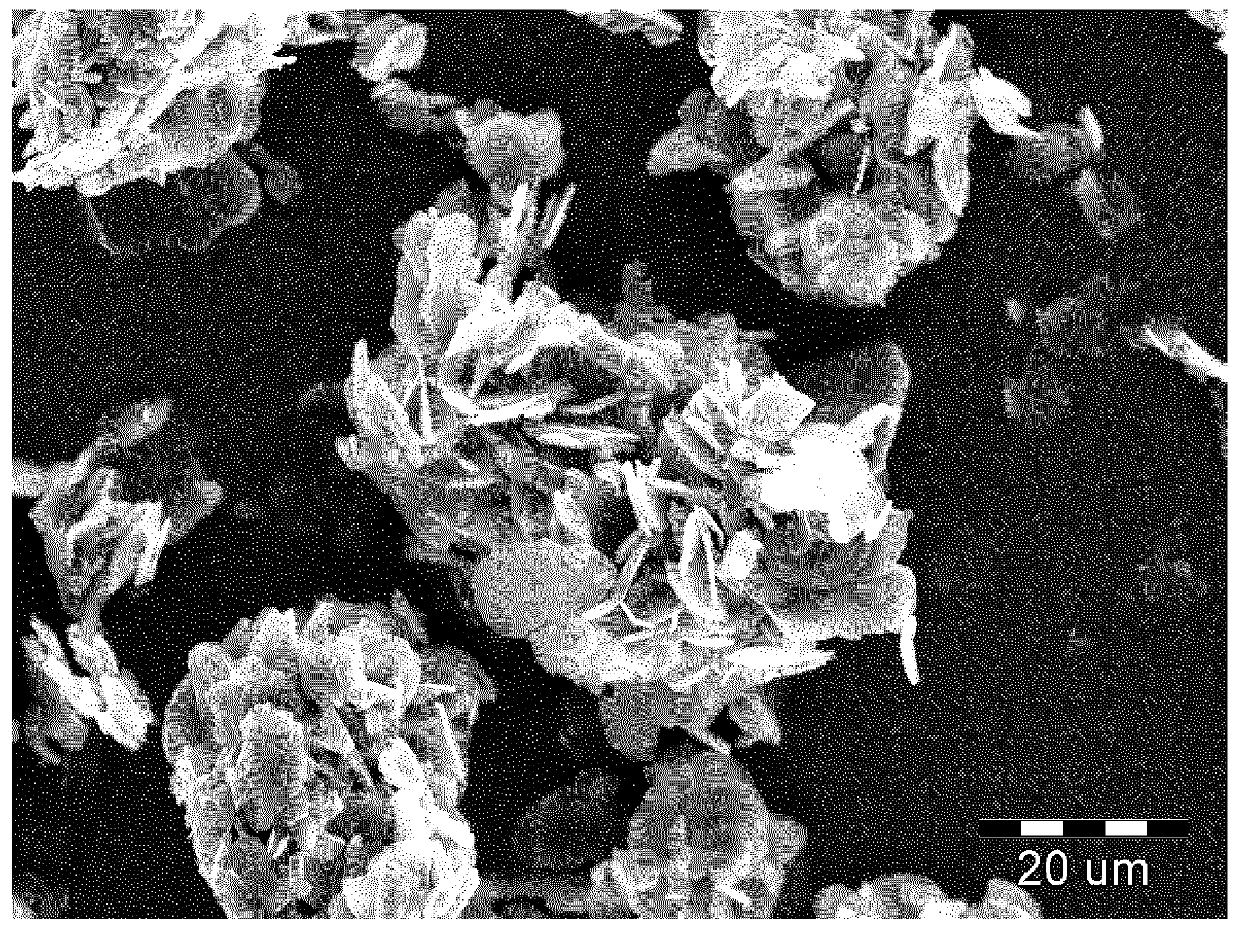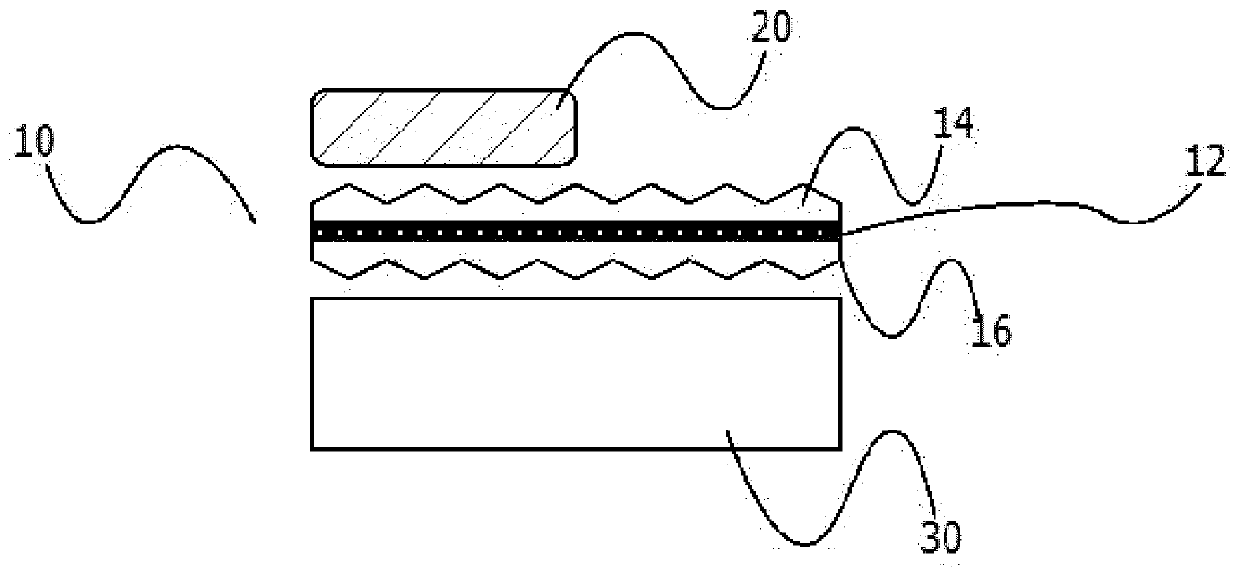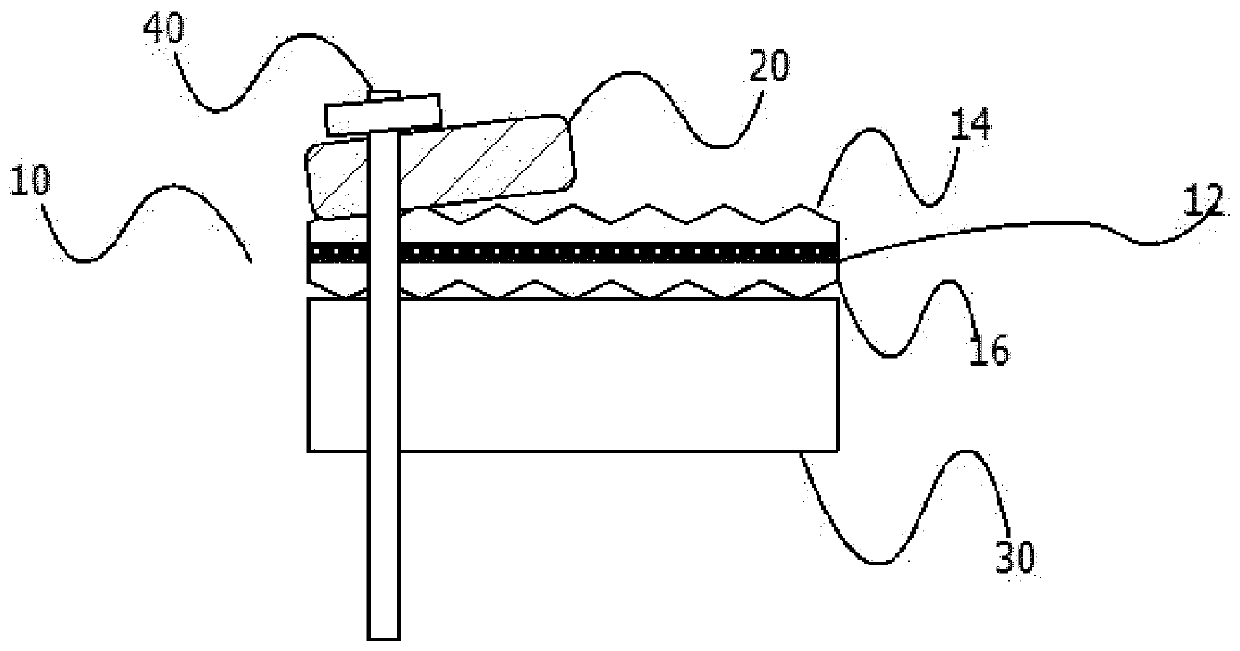Heat dissipation sheet having high load carrying capacity and high thermal conductivity
A heat sink and thermal conductivity technology, which is applied in the field of heat sinks, can solve the problems of reduced thermal conductivity, damaged load resistance, and reduced heat dissipation, and achieves the effects of high load resistance, high thermal conductivity, and low cost
- Summary
- Abstract
- Description
- Claims
- Application Information
AI Technical Summary
Problems solved by technology
Method used
Image
Examples
Embodiment 1
[0058] 100 parts by mass of polyorganosiloxane base polymer (trade name "CF3110" manufactured by Dow Corning Toray Silicone Co., Ltd.), 1 part by mass of crosslinking agent (trade name "RC-4" manufactured by Dow Corning Toray Silicone Co., Ltd.), aggregate Boron nitride powder (Denka Co., Ltd., SGPS grade, hereinafter abbreviated as "SGPS") was filled with the mass parts shown in Table 1 and Table 2, dispersed in 500 mass parts of toluene, and mixed for 15 hours using a mixer. A silicone rubber composition containing a thermally conductive filler material is prepared.
[0059] Using a comma coater, the above-mentioned silicone rubber composition was coated on the glass cloth (trade name "H47" manufactured by UNITIKA Co., Ltd.) as a reinforcing layer shown in Table 1 so that the thickness of one side was 0.175 mm. After drying at 75° C. for 5 minutes, the above-mentioned silicone rubber composition was applied to the other surface of the glass cloth with a thickness of 0.175 mm...
Embodiment 2~14 and comparative example 1~4
[0061] Except having used the conditions shown in Tables 1-3, it carried out similarly to Example 1, and produced the heat sink.
[0062] (evaluate)
[0063] The heat sinks of Examples 1-14 and Comparative Examples 1-4 which were trial-produced were evaluated by the following evaluation items (1)-(5). The results are shown in Tables 1-3. In addition, regarding the example in which the cooling sheet cannot be normally rolled up into a roll form with a width of 1m×10m (caused by slack and surface cracks), "whether it is possible to make a roll" is described as "impossible".
[0064] (1) Volume resistivity
[0065] Made from heat sink Figure 5 A test piece of the shape shown, on both sides of the test piece Figure 5Silver paste was applied to the portion indicated by the hatched portion of , and the volume resistivity was evaluated according to the method described in JIS C2139:2008.
[0066] (2) thermal conductivity
[0067] In terms of thermal conductivity (H; unit W / (m...
PUM
| Property | Measurement | Unit |
|---|---|---|
| mean roughness | aaaaa | aaaaa |
| thickness | aaaaa | aaaaa |
| thickness | aaaaa | aaaaa |
Abstract
Description
Claims
Application Information
 Login to View More
Login to View More - R&D
- Intellectual Property
- Life Sciences
- Materials
- Tech Scout
- Unparalleled Data Quality
- Higher Quality Content
- 60% Fewer Hallucinations
Browse by: Latest US Patents, China's latest patents, Technical Efficacy Thesaurus, Application Domain, Technology Topic, Popular Technical Reports.
© 2025 PatSnap. All rights reserved.Legal|Privacy policy|Modern Slavery Act Transparency Statement|Sitemap|About US| Contact US: help@patsnap.com



